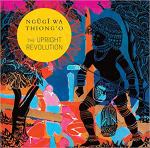|
This section contains 880 words (approx. 3 pages at 400 words per page) |

|
Point of View
"The Upright Revolution" is written from an omniscient third person point of view. This third person narrator employs an authoritative, yet neutral, stance and tone throughout the short story. By writing the tale from this vantage point, the author lends the narrative an allegorical atmosphere and resonance. Though the narrator has access to all of the characters' distinct psyches, he never aligns himself with one character's perspective over another's. For example, at the start of the story, the narrator explains that all of the human body's limbs and organs were "democratic and egalitarian in their relationship" (11). With an unbiased narrative tone, he tells the reader the ways in which the body parts worked and lived together. Even when discord develops between the organs and limbs, the narrator is able to resist commenting upon it. Neither does he tell the reader with whom she should align...
|
This section contains 880 words (approx. 3 pages at 400 words per page) |

|




